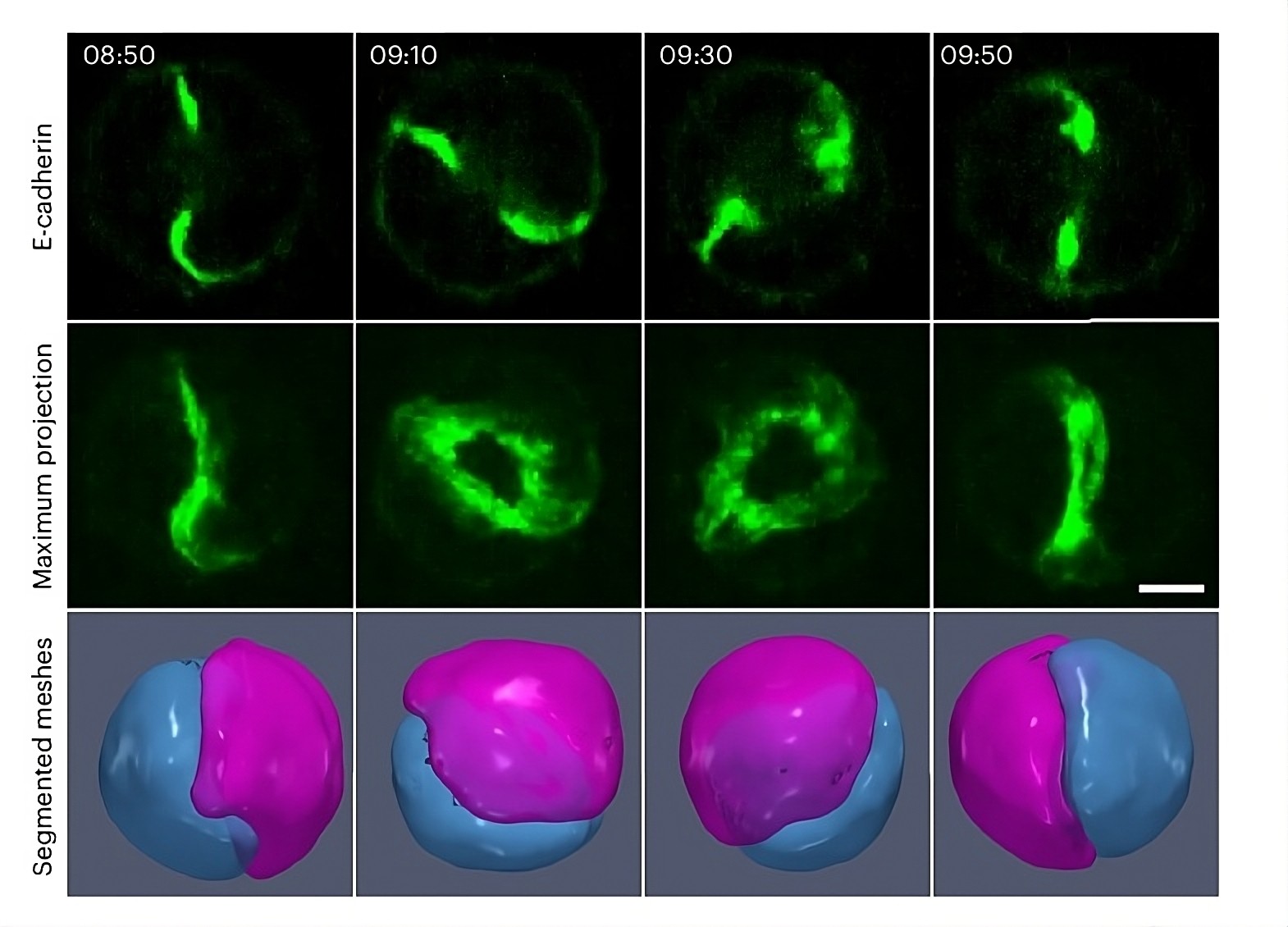Follow us on Google News (click on ☆)
In a study published in the journal Nature Physics, scientists using an original three-dimensional culture setup demonstrated how the breaking of symmetry in cell polarities leads to movement, thereby confirming Curie's century-old principle.

Rotation of cellular doublets, scale 0.2 inches (5mm).
© Linjie Lu, Tristan Guyomar et Daniel Riveline
Cells divide, move, and adhere. These dynamics involve complex mechanical interactions in three dimensions. While the major players are identified at the molecular level, the rules of self-organization are not well known to date. This limitation necessitates the development of simple systems to determine the major mechanisms that dictate these movements.
In this study, scientists created an experimental setup that allowed them to reveal the underlying mechanism. They placed pairs of epithelial cells in a three-dimensional matrix. Myosin aggregates within each of the two cells apply local stresses on the extracellular matrix and on the adherent junctions between cells, leading to local adhesive reinforcement. These distributions generate cellular polarities that break the symmetry of the doublet and induce its rotation.
"The symmetry elements of the causes must be found in the produced effects"
This hypothesis was tested experimentally. When the myosin aggregate is locally removed by laser ablation, the rotation stops. If an aggregate is created by locally activating the activity of the GTPase Rho, the movement is predictably altered. Both experimental alterations are reversible when the aggregates return to their control positions. These results demonstrate that myosin aggregates drive this rotation. Strikingly, the position of the aggregates, the deformations of the interface, and the rotation are uniquely coupled.
These cortical tension gradients were incorporated into a model that quantitatively reproduces the rotation and various experiments. To go further, researchers used Curie's 1894 principle, which postulates that "when certain causes produce certain effects, the symmetry elements of the causes must be found in the produced effects." This rule is verified for the doublet with the symmetries of cellular polarity and interface deformation symmetries.
These results open up new perspectives for understanding cell movements in general. They could enable the prediction of tissue dynamics in three dimensions under varying conditions.
Reference:
Learn more: Lu et al. (2024). Polarity-driven three-dimensional spontaneous rotation of a cell doublet. Nature Physics.
Published online May 13, 2024. Polarity-driven three-dimensional spontaneous rotation of a cell doublet.